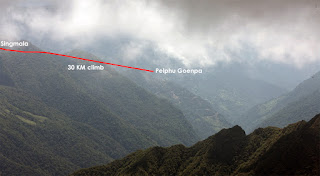In the article by Bhutan Broadcasting Service (BBS) dated July 29, 2015, headlined “Deadline extension could cost the government time and money”, the reporter writes:
“The government could lose a revenue amount of more than Ngultrum 47.7 billion as a result of extension of completion date of the Punatshangchhu I hydropower project to 2019”. (http://www.bbs.bt/news/?p=52407)
In response, R N Khazanchi the Managing Director of the Punasangchhu Projects I & II states:
“The plant would operate for 35 years and even if the project is completed three years later, it would earn the government the same amount of revenue, only the time was being delayed. It cannot be considered revenue loss; it is the same amount of income being deferred to a different date”.
Now, what the person responsible for managing and overseeing Bhutan’s two biggest hydro-power projects costing over Nu. 200.00 billion is propagating is too complex an economic theory, above and beyond the understanding of people of lesser intelligence. This intricate and conceptual philosophy needs to be explained in plain English so that people have a grasp of what is being said.
What the Managing Director is saying is simple:
1. Cost over-runs and mounting interest costs is inconsequential and has no bearing on the profitability
In response, R N Khazanchi the Managing Director of the Punasangchhu Projects I & II states:
“The plant would operate for 35 years and even if the project is completed three years later, it would earn the government the same amount of revenue, only the time was being delayed. It cannot be considered revenue loss; it is the same amount of income being deferred to a different date”.
Now, what the person responsible for managing and overseeing Bhutan’s two biggest hydro-power projects costing over Nu. 200.00 billion is propagating is too complex an economic theory, above and beyond the understanding of people of lesser intelligence. This intricate and conceptual philosophy needs to be explained in plain English so that people have a grasp of what is being said.
What the Managing Director is saying is simple:
1. Cost over-runs and mounting interest costs is inconsequential and has no bearing on the profitability
of the projects.
2. Completion of project in time is not important - as long as it is completed - even if ten years later.
3. That the government of Bhutan will derive the same amount of “income” from Punasangchhu-I even after
three years of delay and project cost escalating to Nu. 120.00 billion, from its initial estimate of
Nu. 35.00 billion.
4. The Managing Director talks of “revenue” and “income” in the same breadth meaning that he wants us to
believe that they are one and the same.
Wah re wah Khazanchi Bhai, kya dialogue mara!
2. Completion of project in time is not important - as long as it is completed - even if ten years later.
3. That the government of Bhutan will derive the same amount of “income” from Punasangchhu-I even after
three years of delay and project cost escalating to Nu. 120.00 billion, from its initial estimate of
Nu. 35.00 billion.
4. The Managing Director talks of “revenue” and “income” in the same breadth meaning that he wants us to
believe that they are one and the same.
Wah re wah Khazanchi Bhai, kya dialogue mara!
























